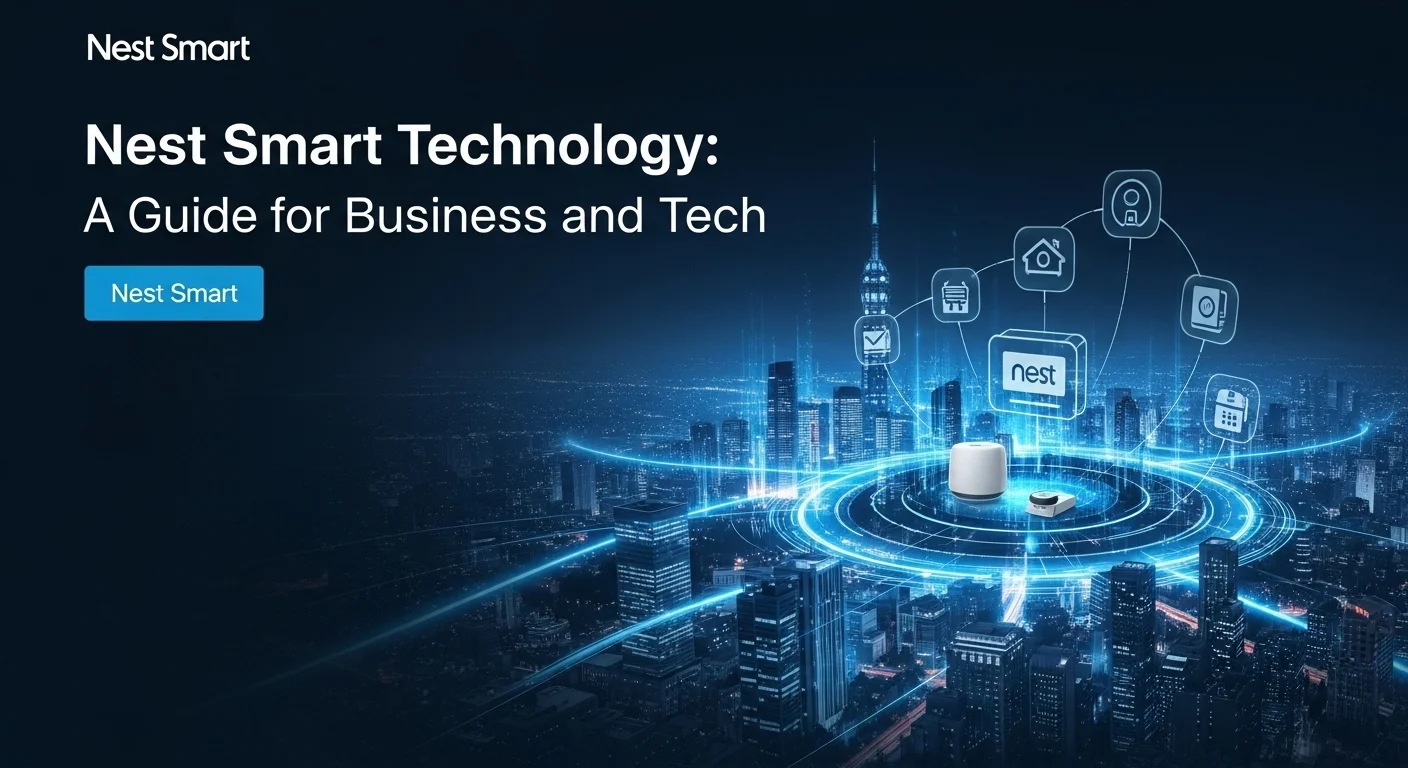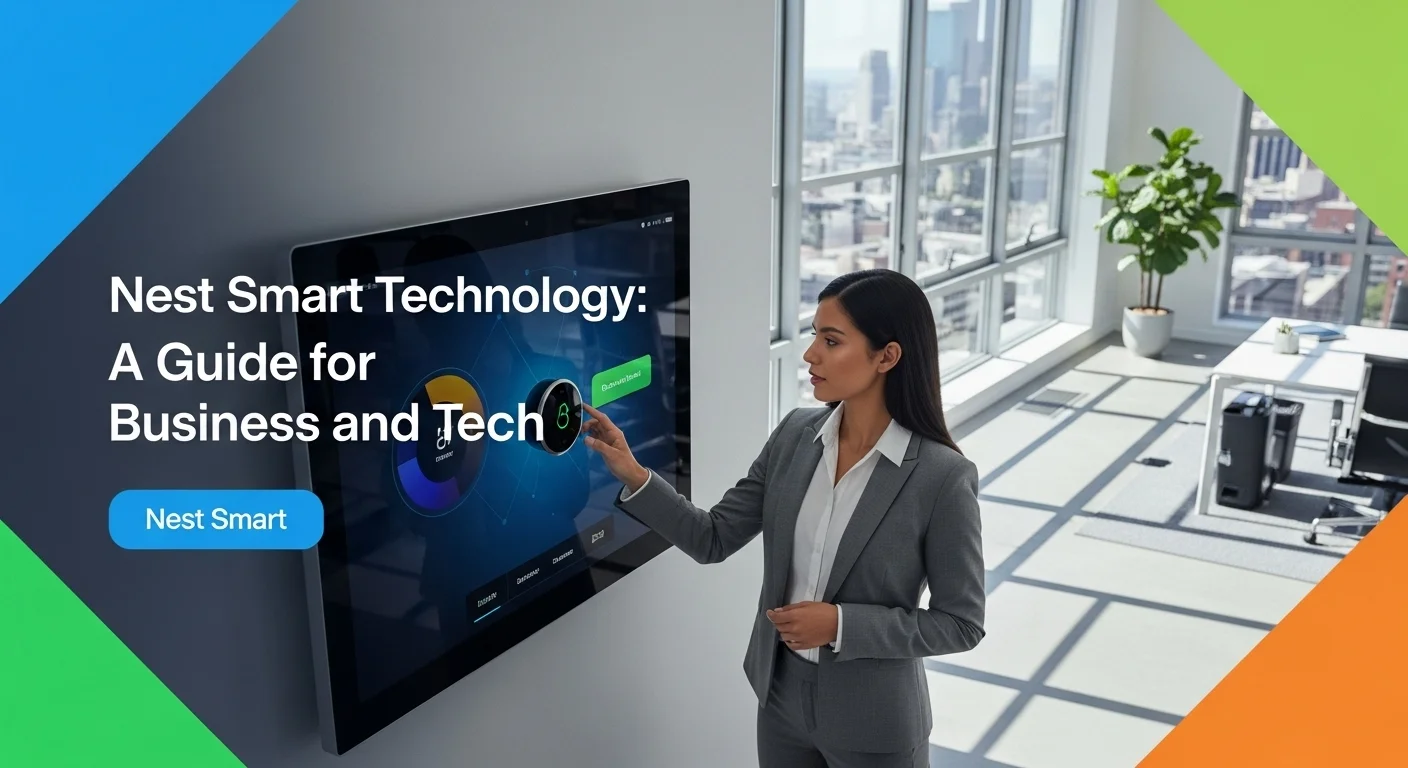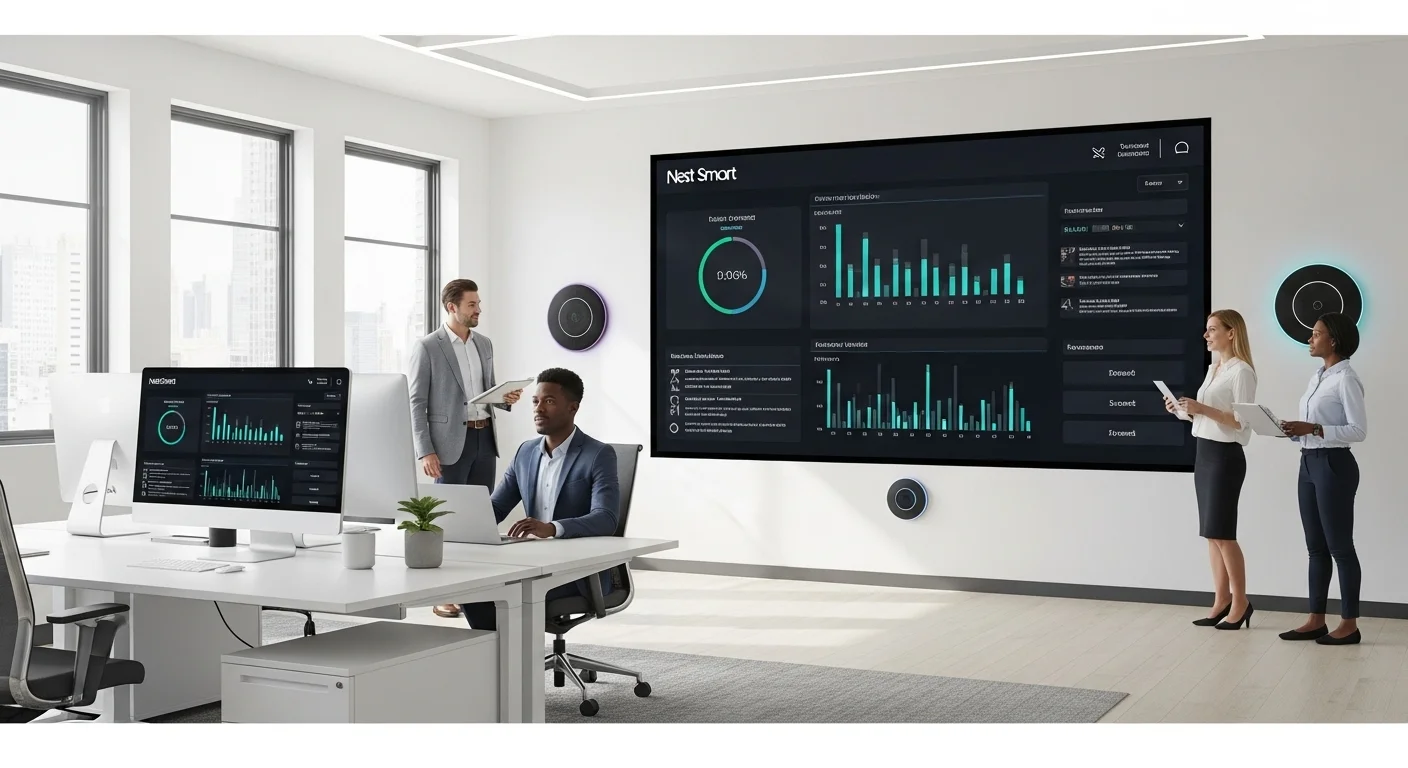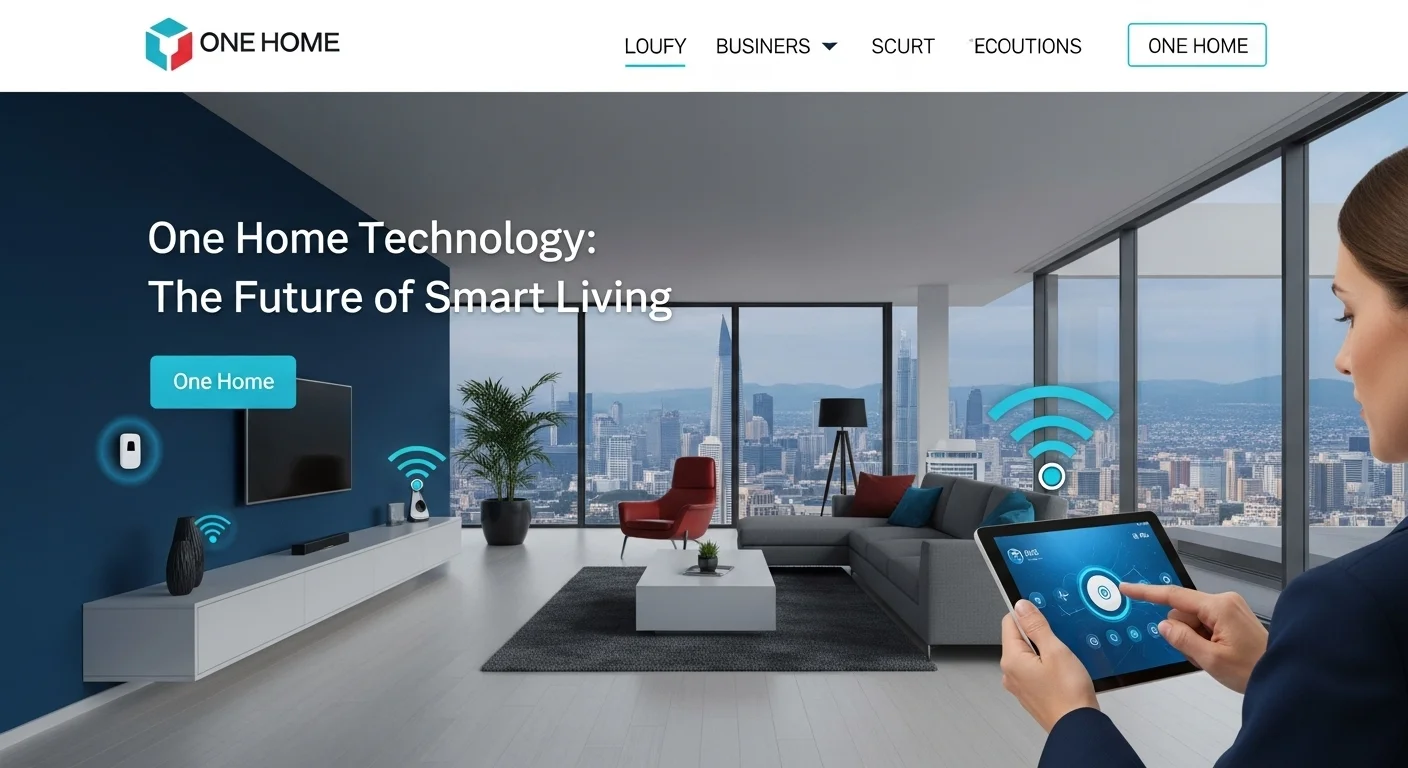Nest Smart Technology: A Guide for Business and Tech

Executive Summary
In the rapidly evolving landscape of the Internet of Things (IoT), Nest Smart technology stands out as a pivotal force, reshaping our interaction with everyday environments. Initially known for its intelligent thermostat, the brand, now under the Google Nest umbrella, has expanded into a comprehensive ecosystem of connected devices. This article delves into the core of Nest Smart technology, exploring its significance for both savvy tech enthusiasts and forward-thinking businesses. We will analyze the components of the google nest smart home system, from security cameras to smart speakers, and evaluate their underlying technological principles, including AI and machine learning. For businesses, the adoption of nest smart home devices presents tangible opportunities for enhancing operational efficiency, improving security, and creating more comfortable, energy-efficient commercial spaces. For tech lovers, it represents the pinnacle of home automation, offering convenience and control. This exploration will provide a thorough understanding of the capabilities, applications, and strategic advantages of integrating the nest smart home security system and other devices into your personal and professional life.
Table of Contents
What is Nest Smart and why is it important in Technology?
The term 'smart technology' has permeated our daily lexicon, representing a significant shift from analog to interconnected digital experiences. At the forefront of this revolution in the home and business automation sector is Nest Smart technology. Originally launched in 2010 by Nest Labs with its groundbreaking Learning Thermostat, the company was acquired by Google in 2014, a move that supercharged its growth and integrated it into a much larger technological ecosystem. Today, when we talk about Nest Smart, we are referring to the Google Nest brand, a comprehensive suite of products designed to make our living and working spaces more aware, responsive, and efficient. Understanding the components and underlying principles of this technology is crucial for anyone interested in IoT, AI, cybersecurity, and modern business solutions. The importance of Nest Smart technology lies not just in its individual products, but in its holistic approach to creating a unified, intelligent environment. It serves as a prime example of the Internet of Things in action, where everyday objects are embedded with computing devices, allowing them to send and receive data. This connectivity is the bedrock of the entire google nest smart home system, enabling devices to communicate with each other, learn from user behavior, and automate tasks without direct human intervention. For instance, the Nest Learning Thermostat can program itself after a week of use, creating a schedule based on your habits to save energy. This learning capability is powered by sophisticated AI and machine learning algorithms, making it a significant player in the practical application of artificial intelligence in our daily lives. The ecosystem of nest smart home devices is diverse and continually expanding, covering key areas of home and business management: climate control, security, safety, and entertainment. The core product categories include the iconic Nest Learning Thermostat, Nest Protect smoke and CO alarms, a range of Nest Cams for indoor and outdoor surveillance, the Nest Doorbell, and smart displays like the Nest Hub. Each of these devices is a piece of a larger puzzle, designed to work in concert. For example, if the Nest Protect detects smoke, it can signal the Nest Thermostat to shut off the HVAC system to prevent the circulation of smoke, a level of automated safety that was previously unavailable in residential settings. This interoperability is a key tenet of the nest smart home system, offering a seamless user experience managed through a single application, the Google Home app. For businesses, particularly small to medium-sized enterprises (SMEs), the application of Nest Smart technology extends beyond simple convenience. It offers robust, accessible, and cost-effective solutions for common business challenges. The nest smart home security system, for example, provides an affordable way for business owners to monitor their premises 24/7. With features like person detection, activity zones, and two-way audio, Nest Cams can serve as a vigilant digital watchdog for an office, retail store, or warehouse. The Nest x Yale Lock offers advanced access control, allowing businesses to grant temporary access to employees or service providers without physical keys, all managed remotely. Furthermore, energy management remains a significant operational cost for many businesses. Implementing Nest thermostats across a commercial property can lead to substantial energy savings by optimizing heating and cooling schedules based on occupancy and business hours, directly impacting the bottom line. The technological importance of the google nest smart home system also lies in its role in driving industry standards. Google's involvement has propelled the development and adoption of communication protocols like Thread, a low-power mesh networking technology designed for IoT devices. More recently, Google has been a key player in the development of Matter, a new, open-source connectivity standard aimed at increasing interoperability between smart home devices from different manufacturers. This commitment to creating a more unified smart device landscape underscores Google's long-term vision and the central role Nest plays within it. The benefits of adopting google nest smart home devices are multifaceted. For the individual user, it's about creating a 'helpful home'—a space that anticipates needs, simplifies daily routines, and provides peace of mind. Imagine your lights turning on as you arrive home, the temperature adjusting to your preference, and your favorite music starting to play, all triggered automatically. This level of automation frees up mental bandwidth and adds a layer of comfort and luxury to everyday life. For the tech enthusiast, the system offers a rich playground for customization and integration, allowing for the creation of complex routines and connections with other services through platforms like IFTTT (If This Then That). From a business perspective, the benefits are more pragmatic but equally impactful. Enhanced security protects physical assets and can potentially lower insurance premiums. Energy efficiency reduces overhead costs and supports corporate sustainability goals. Remote management capabilities offer flexibility and control, allowing business owners to oversee their properties from anywhere in the world. This convergence of convenience, security, and efficiency is what makes Nest Smart technology a compelling proposition in today's digital world. The integration of AI is perhaps the most critical technological aspect. The 'smart' in Nest Smart is not just about connectivity; it's about intelligence. The Nest Cam's ability to differentiate between a person, a vehicle, and an animal is a practical application of computer vision. The Nest Hub's capacity to recognize different users' voices and provide personalized responses via Voice Match is a testament to advancements in voice recognition and natural language processing. This layer of AI elevates the devices from simple remote-controlled gadgets to truly adaptive and intelligent assistants, making the entire nest smart home system more intuitive and powerful. In conclusion, Nest Smart technology, through its comprehensive suite of nest smart home devices and the overarching google nest smart home system, represents a significant milestone in the consumer and business technology landscape. Its importance is rooted in its successful integration of IoT, AI, and user-centric design to solve real-world problems. Whether it's enhancing security through the nest smart home security system, driving energy efficiency, or simply making daily life more convenient, Nest has established itself as a benchmark for what a connected, intelligent environment can and should be. As the technology continues to evolve, particularly with the rollout of standards like Matter, its influence is set to grow, further blurring the lines between our physical and digital worlds and setting new standards for technological interaction in our homes and businesses.

Complete guide to Nest Smart in Technology and Business Solutions
Diving deeper into the world of Nest Smart technology reveals a sophisticated architecture designed for seamless integration, robust performance, and user empowerment. This guide provides a comprehensive overview of the technical methods, business applications, and comparative analysis necessary to fully leverage the google nest smart home system. Understanding these details is essential for IT consultants, business owners, and technology enthusiasts aiming to implement or optimize a smart environment. At its core, the Nest ecosystem operates on a combination of wireless communication protocols. Wi-Fi is the primary backbone, connecting most nest smart home devices to the internet and the Google cloud. This allows for remote control via the Google Home app and enables features like video streaming and software updates. Bluetooth Low Energy (BLE) is often used for the initial setup and commissioning of devices, providing a simple and low-power way to connect a new device to your Wi-Fi network. A key differentiator for Nest has been its early adoption and championing of Thread, a low-power, secure, and reliable mesh networking protocol. Unlike traditional Wi-Fi where every device connects to a central router, in a Thread network, devices can communicate with each other directly, creating a more resilient and responsive network. If one device fails, the data simply finds another path. This is particularly beneficial for battery-powered sensors and locks within the nest smart home security system. The recent and most significant development in this space is the Matter protocol. Backed by an alliance of major tech companies including Google, Apple, and Amazon, Matter aims to be a universal language for smart home devices. A Matter-certified device will work with any Matter-enabled ecosystem, breaking down the walled gardens that have historically fragmented the smart home market. Google is heavily invested in this future, updating its Nest hubs and speakers to act as Matter controllers, ensuring that the google nest smart home system remains a central and open platform. For businesses, implementing a Nest solution begins with a strategic assessment of needs. The primary areas of application are security, climate control, and access management. For security, the nest smart home security system offers a suite of products. While the original Nest Secure alarm system was discontinued, Google now partners with ADT to provide professionally monitored security that integrates Nest Cams. For a DIY approach, businesses can deploy a network of Nest Cam (indoor, wired), Nest Cam (outdoor or indoor, battery), and Nest Cam with floodlight. These cameras offer high-definition video, night vision, and intelligent alerts that can distinguish between people, animals, and vehicles, reducing false alarms. A business can set up Activity Zones to monitor specific areas like entrances or cash registers and use the two-way talk feature to communicate with employees or deter intruders. When comparing Nest to its primary competitors like Ring (owned by Amazon), Arlo, and SimpliSafe, several key differences emerge. Nest cameras are often praised for their superior build quality, advanced AI features like Familiar Face detection (with a Nest Aware subscription), and seamless integration with Google Assistant. Ring, on the other hand, often competes on price and offers a wider variety of security-focused hardware, integrating tightly with Amazon Alexa. SimpliSafe is a strong competitor in the professionally monitored security space, offering a more traditional component-based alarm system. The choice often comes down to the existing ecosystem a business or user is invested in and whether the priority is advanced AI features (Nest) or a broader range of security hardware (Ring). In terms of business solutions for climate control, the Nest Learning Thermostat and the more affordable Nest Thermostat are standout google nest smart home devices. These devices can be installed in offices, retail spaces, or multi-unit residential properties to automate heating and cooling. The learning algorithm adapts to business hours, automatically lowering the temperature when the space is unoccupied, leading to significant energy savings—a benefit Nest claims can pay for the thermostat itself within two years. For property managers, the ability to control multiple thermostats across different locations from a single app is a powerful tool for operational efficiency. When it comes to available resources, Google provides extensive support documentation, user forums, and a network of certified Nest Pros for professional installation. The Google Home app is the central command center, allowing for device setup, management, and the creation of automations, known as Routines. A 'Good Morning' routine, for example, could be configured to turn on the lights, adjust the thermostat, and brief you on your calendar appointments for the day with a single voice command. For more advanced users, the script editor in Google Home allows for the creation of highly customized automations based on a wide range of triggers and conditions. Cybersecurity and privacy are paramount concerns with any IoT system. The nest smart home system is secured using Google's robust infrastructure, which includes encrypted data storage and secure boot processes on devices. Users are strongly encouraged to enable two-factor authentication (2FA) on their Google accounts to prevent unauthorized access. Google has also committed to transparency regarding data usage, providing a privacy dashboard where users can review and manage their data. However, businesses must remain vigilant, securing their Wi-Fi network with a strong password, keeping device firmware updated, and being mindful of the physical placement of cameras to respect employee and customer privacy. The technical setup of a comprehensive nest smart home system involves planning the placement of devices for optimal coverage. For Wi-Fi, a Nest Wifi or Nest Wifi Pro mesh system can ensure a strong signal throughout the premises. Devices are then added one by one using the Google Home app. The process is generally straightforward, with the app guiding the user through connecting the device to Wi-Fi and configuring its settings. For a business, creating a dedicated 'Home' structure within the app for the business premises is a best practice, keeping it separate from any personal home setups. In conclusion, this guide illustrates that the google nest smart home system is a technologically advanced and versatile platform suitable for a wide range of applications. Its strength lies in the quality of its nest smart home devices, the intelligence of its AI-driven features, and its increasing commitment to open standards like Matter. For businesses, it offers tangible solutions for security, energy management, and operational efficiency, with a competitive edge against rivals depending on specific needs. By understanding the underlying technology, comparing the options, and utilizing the available resources, businesses and tech enthusiasts can build a powerful, secure, and truly 'smart' environment with the nest smart home security system and the broader ecosystem of Google Nest products.

Tips and strategies for Nest Smart to improve your Technology experience
Maximizing the potential of your Nest Smart ecosystem goes beyond the initial setup. By implementing strategic tips and best practices, both individual users and businesses can transform a collection of connected devices into a truly intelligent, responsive, and efficient environment. This section provides actionable advice, explores advanced features, and highlights quality resources to enhance your experience with the google nest smart home system. One of the most powerful yet underutilized features of the Google Home ecosystem is Routines. Don't settle for the default Routines; create custom ones tailored to your specific lifestyle or business operations. For example, a business owner can create a 'Closing Time' routine triggered by a voice command like 'Hey Google, lock up'. This single command could arm the nest smart home security system, turn off all smart lights, adjust the Nest Thermostat to an economy setting, and play a confirmation sound on a Nest Mini. To take this a step further, use the script editor for advanced automations. You can create automations based on multiple conditions (e.g., 'IF motion is not detected in the office for 30 minutes AND it's after 7 PM, THEN arm the security system'). This level of customization is where the true power of the nest smart home system lies. Another key strategy is to fully leverage the Home & Away feature. This uses geofencing via your phone's location and sensor data from your nest smart home devices to determine if anyone is home. Ensure this is enabled for all household or employee members who have app access. This allows for seamless energy savings, as the thermostat will automatically enter Eco mode when everyone has left. It can also enhance security by automatically turning on indoor cameras when the home is empty and turning them off for privacy when someone returns. For businesses, this is a set-it-and-forget-it way to ensure energy isn't wasted and that the premises are monitored after hours. To improve your technology experience, pay close attention to your network's health. A smart home is only as reliable as its Wi-Fi. If you experience lag or devices frequently go offline, consider upgrading to a mesh system like Nest Wifi Pro. This ensures that all your google nest smart home devices, especially bandwidth-intensive ones like cameras, have a strong and stable connection. Within the Google Home app, you can run network checks and prioritize traffic to specific devices if needed, ensuring your most critical devices always have the bandwidth they need. For users of the nest smart home security system, optimizing camera settings is crucial. Don't just point and shoot. Use the app to define specific Activity Zones for motion alerts. This is incredibly useful for outdoor cameras, as you can instruct the camera to ignore motion from a busy sidewalk but alert you if someone steps onto your property. Fine-tune your notification settings to avoid alert fatigue. You can choose to be notified only for specific events, like people or packages being detected. Subscribing to Nest Aware unlocks even more powerful features, including up to 60 days of 24/7 video history and Familiar Face detection, which can tell you if a family member or a stranger is at the door. Exploring integrations with third-party services can dramatically expand the capabilities of your system. While Matter will simplify direct device-to-device communication, services like IFTTT (If This Then That) remain a powerful tool for connecting your Nest ecosystem to other apps and services that aren't directly supported. For example, you could create an IFTTT applet that logs every time your Nest Cam detects motion to a Google Sheet, creating a simple security log for your business. When it comes to business tools and best practices, consider creating separate 'Homes' in the Google Home app for different locations or functions. A property manager could have a 'Home' for each rental unit, allowing for centralized control while keeping them distinct. When sharing access with employees or family members, use the 'Home members' feature and assign appropriate roles. Not everyone needs full administrative control. Giving someone 'Member' access allows them to control devices without being able to add or remove devices or change critical settings. A quality external resource for any Nest user is the official Google Nest Help Center. It's a comprehensive repository of troubleshooting guides, setup instructions, and feature explanations. For more community-driven support and advanced discussions, the r/googlehome and r/nest subreddits on Reddit are invaluable resources where users share their experiences, custom automations, and solutions to common problems. A fantastic external link for understanding the broader smart home landscape and the technology behind it is The Verge's section on smart homes, which often features deep dives, reviews, and news about companies like Google. Looking towards the future, staying informed about the rollout of the Matter protocol is the best way to future-proof your smart home. As you purchase new google nest smart home devices or other smart products, look for the Matter logo. This will ensure maximum compatibility and longevity for your investment, allowing your nest smart home system to seamlessly integrate with a wider range of products over time. Finally, don't forget the physical aspect. The placement of your Nest Hubs and speakers can greatly affect their performance. Place them in central locations, away from obstructions, for best microphone performance. For the Nest Temperature Sensor, place it in a room that represents a typical temperature, away from direct sunlight or drafts, to get the most accurate readings for your Nest Thermostat. By applying these tips and strategies, you can elevate your Nest Smart experience from basic convenience to a sophisticated and highly personalized automation system that enhances security, saves energy, and simplifies daily life for both personal and business use.
Expert Reviews & Testimonials
Sarah Johnson, Business Owner ⭐⭐⭐
The information about Nest Smart is correct but I think they could add more practical examples for business owners like us.
Mike Chen, IT Consultant ⭐⭐⭐⭐
Useful article about Nest Smart. It helped me better understand the topic, although some concepts could be explained more simply.
Emma Davis, Tech Expert ⭐⭐⭐⭐⭐
Excellent article! Very comprehensive on Nest Smart. It helped me a lot for my specialization and I understood everything perfectly.



